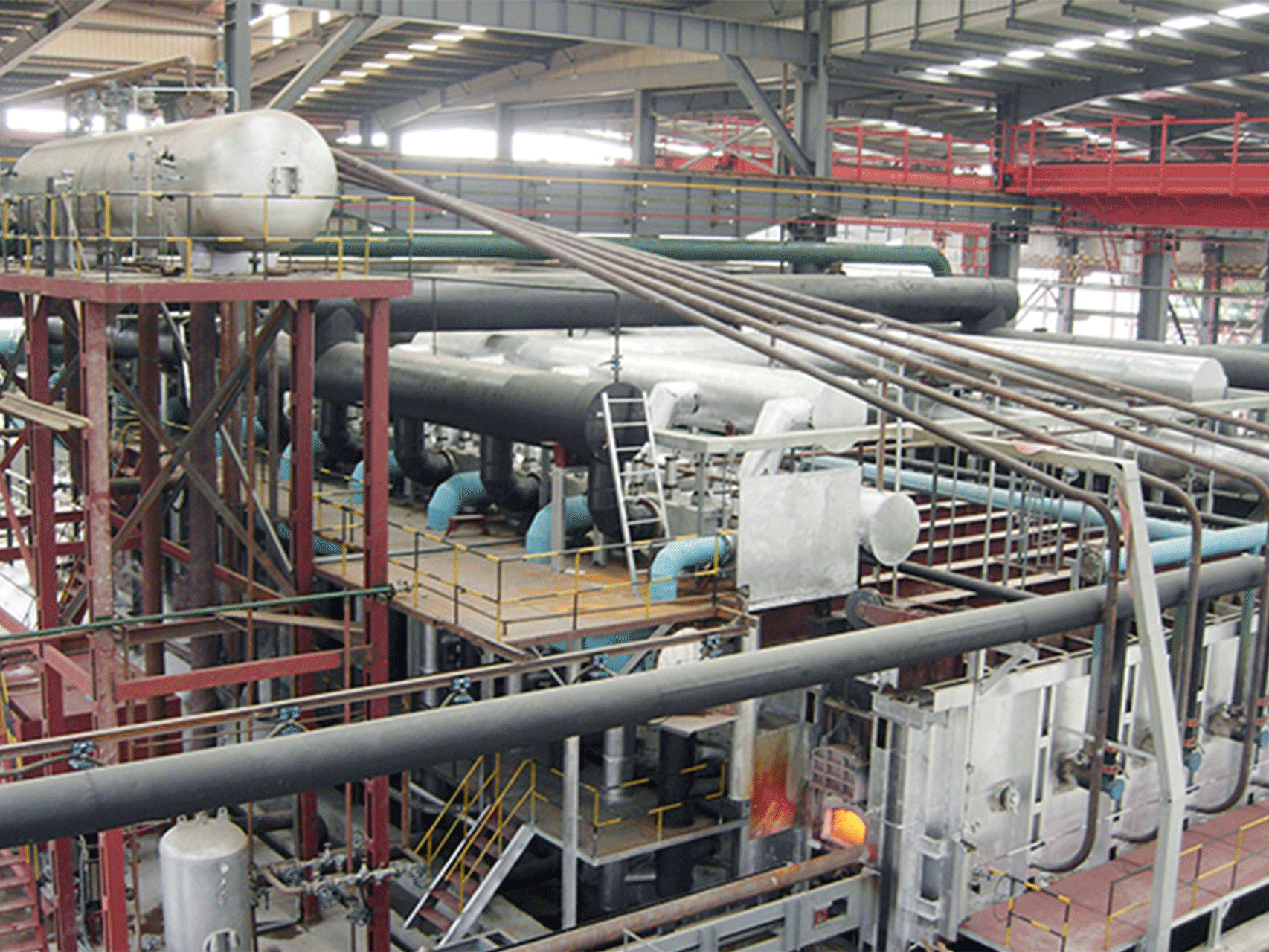A regenerative steel rolling furnace, also known as a regenerative furnace, is a type of industrial furnace used for heating and reheating steel. It operates by utilizing regenerative heat transfer, a process in which the hot exhaust gases leaving the furnace are used to preheat the incoming combustion air.
In a regenerative furnace, there are two or more refractory-lined chambers that alternate between serving as the heating and cooling zones. The chambers are filled with heat-absorbing material, such as bricks, that store the heat generated by the combustion process. The furnace is equipped with valves that control the flow of the hot exhaust gases between the chambers, allowing them to be redirected and reused to preheat the incoming combustion air.
Regenerative furnaces are commonly used in steel rolling mills, where they are used to heat and roll steel ingots into various shapes and sizes.
Working principle: regenerative steel rolling furnace
The working principle of a regenerative steel rolling furnace involves the use of regenerative heat transfer to improve the energy efficiency of the heating process.
The furnace is typically made up of two or more refractory-lined chambers, which alternate between serving as the heating and cooling zones. The chambers are filled with heat-absorbing material, such as bricks, which store the heat generated by the combustion process.
During operation, a fuel, such as natural gas or coke oven gas, is burned in the heating zone, generating high-temperature gases. These gases flow through the heat-absorbing material, transferring their heat to the bricks.
As the hot gases exit the furnace, they are directed through a set of valves that redirect them to the cooling zone, where they transfer their heat to the bricks in that chamber. At the same time, a separate set of valves allows fresh air to enter the furnace and pass through the bricks in the cooling zone, preheating the air before it enters the heating zone.
The direction of the hot gases and the flow of the incoming air are periodically reversed using the valves, so that the heat-absorbing material in each chamber is alternately heated and cooled. This regenerative process helps to improve the efficiency of the furnace, as it allows the heat generated by the combustion process to be reused to preheat the incoming combustion air.
The preheated air is then directed into the heating zone, where it reacts with the fuel to generate the high temperatures needed for steel rolling. This process can be repeated for hours or days, as needed, to produce the desired amount of steel product.
The characteristics
Regenerative steel rolling furnaces have several characteristics that make them suitable for heating and reheating steel. Some of these characteristics include:
- Energy efficiency: They are highly energy efficient, as they reuse the heat generated during the combustion process to preheat the incoming air. This can significantly reduce fuel consumption and operating costs.
- High-temperature capabilities: They can achieve high temperatures, up to 1600°C, which is necessary for steel rolling and other high-temperature processes.
- Flexibility: Regenerative furnaces can be used for a variety of steel rolling applications, including the production of long products, flat products, and seamless tubes.
- Low emissions: They are designed to produce low emissions, which can help companies meet environmental regulations and reduce their carbon footprint.
- Durability: They are built to withstand high temperatures and the harsh operating conditions of a steel rolling mill. They are typically constructed of high-quality refractory materials that can withstand thermal shock and abrasion.
- Easy maintenance: They are relatively easy to maintain, as they have few moving parts and require minimal downtime for repairs and cleaning.













